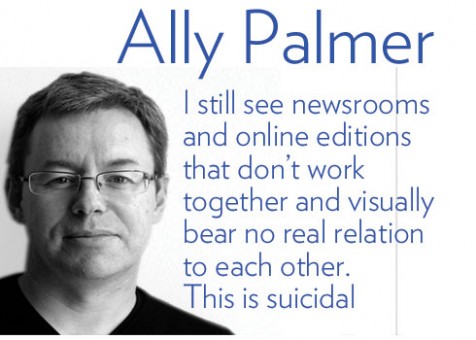
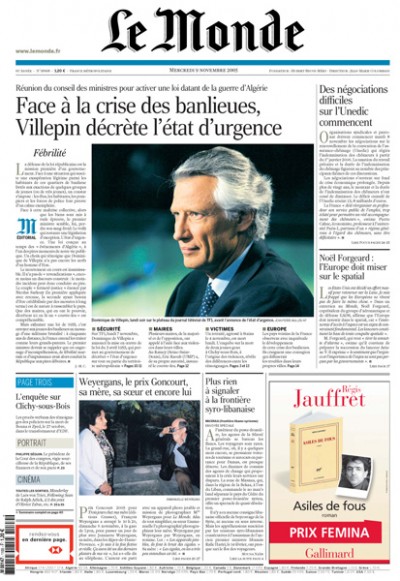
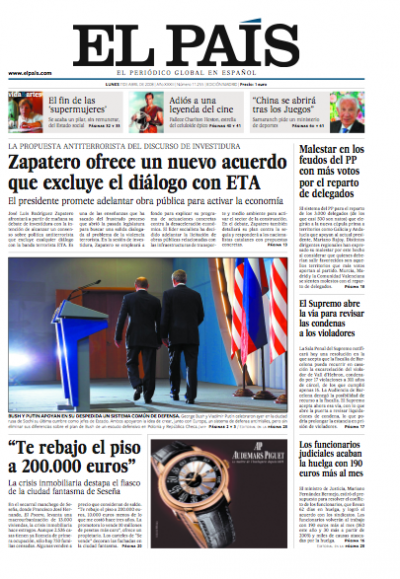
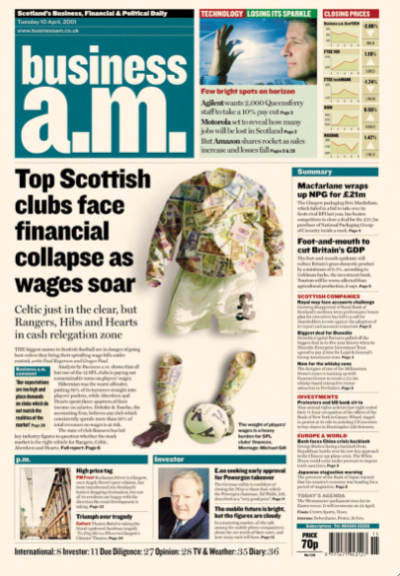
The Three Minute Interview
Ally Palmer is one of the principals in the Scottish design firm Palmer Watson. He and his firm have been involved with a variety of projects through the UK and Europe—-Le Monde and El Pais, among others. For more information: http://www.palmerwatson.com/thankyou.htm
?Mario: How do you answer the perennial question from print clients who want to know about the future of newspapers and other printed products??
Ally: We are asked that almost as often as we are asked by publishers to create “a new design that should be modern without alienating our conservative readers and will appeal to a younger, more female readership”.??There’s no doubt that we’re working in an industry which is, for the most part, managing decline, but there’s also no doubt that print still has a place in the modern media landscape.??We are seeing newspapers produced by fewer and fewer journalists, which is worrying – but small can sometimes be better. You can see the evidence in many small newspapers around the world that, particularly from a design point of view, are creative and innovative simply because they have to be smarter than their better resourced rivals
. ???Mario: Personally, what are some of the trends you see in the future for daily newspapers globally?
Ally: ?Readers have less and less time and inclination to read a paid-for weekday newspaper, so I?can see the daily paper becoming a smaller, more tightly edited product, with more and more resources put into weekend editions.??Or maybe we’ll see the death of the weekday newspaper completely. Weekly publications, whether traditional newspapers like The Observer in London or news magazines like The Economist will remain relevant simply because they are more reflective and contrast well with the 24-hour-connected society we live in now.??Personally I?would still be happy to buy a compact daily newspaper that was smart, well edited and kept me informed and entertained. But there are times when I?want a newspaper with more depth. I?recently had the pleasure of reading the New York Times cover to cover on a visit to the US. Now that’s what I call a newspaper (though please… those jumps!).??So, despite the lack of time I?have available to read a newspaper, I still can’t live without one – although this is probably a generational thing.??Neither of my children read newspapers, despite my best efforts. I used to think this was an inevitable stage of life; that eventually young people would need a newspaper as they get jobs, start families and take on more responsibility. But I?now worry that they will never need print.??This of course does not mean that newspaper publishers shouldn’t be capturing these young readers, but they must engage them online and be sure that the print and web editions work together. I?still see newsrooms and online editions that don’t work together and visually bear no real relation to other. This is suicidal
Mario: What are some of your favorite typefaces? If you were to be stranded for a long period of time in some remote spot: which fonts would you carry with you???
Ally: That’s a difficult one to answer. Too many to chose from.??When I?started working in newspaper design in 1989 I had a few favourites. Franklin and Bureau Grotesque were my first experiences of working with heavy sans type, then Interstate came along and inspired a few designs. Since then I’ve been drawn towards a number of wonderful sans serif type families such as Knockout, Gotham and Whitney and more recently Flama and Antenna.??The first serif that I?was really drawn to was Janson which we used in The Scotsman after seeing it working so well in that late but great German weekly Die Woche. Then Gerard Unger’s work was an inspiration, though I?was more drawn to his less well known type, Coranto and more recently Capitolium. Matthew Carter’s Miller has always been a great newspaper type family and a recent find has been Expresso by Mario Feliciano.??For me type designers are the rock stars of our industry.
Knight Foundation Challenge Deadline
Did you know that November 1, 2008 is the last day anyone with a good
idea can submit an application to the Knight News Challenge?
The worldwide competition offers up to $5 million and seeks innovative
ideas for a digital news and information projects, including:
Improving local online news; bringing Web 2.0 tools to local
neighborhoods; publishing platforms to support conversations in
specific geographic communities.
Remember, there are just four rules for applicants to follow:
1. Use or create digital, open-source technology as the code base.
2. Use news and information to serve the public interest.
3. Benefit one or more specific geographic communities.
4. Be innovative.
For the first time, the contest offers more than fifty coaches
standing by online in the ‘“News Challenge Garage” at
garage.newschallenge.org to help innovators apply.
Last year’s winners received prizes ranging from $15,000 to $876,000.
They included individuals, philanthropic organizations and for-profit
businesses, such as the Bakersfield Californian newspaper. Ten winners
were from the United States, and six were from Canada, England,
Lithuania, South Africa, Zimbabwe and Russia.
For more information and to apply visit www.newschallenge.org.
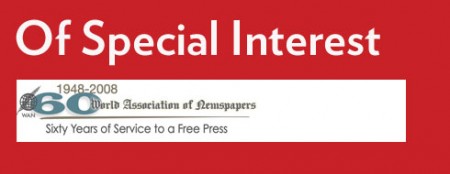
Mario to speak in Amsterdam Oct. 17
I am honored to be part of the World Association of Newspaper’s 11th Readership Conference, in Amsterdam, Netherlands, Oct. 16-17. The program is built as The Audience-Building Conference for Publishers, Editors, Marketeers and other Senior Executives.. The conference includes a keynote presentation titled The Eternal Power of Print (Why print will endure beyond the digital revolution and remain a part of our private and business lives forever! The business implications for media publishers of a bright future for print.) by William Powers, media columnist, National Journal magazine (Atlantic Media), USA .
My own presentation is titled A Successful Audience Strategy and will deal with the path of the story in a multiplatform world and focusing on specific segments of the readership. I will have coverage of the conference in this blog next week as it happens.
For registration and full program information:
http://www.wan-press.org/amsterdam2008/home.php
![]()
In Amsterdam, to speak to the WAN’s 11th Readership Conference.
TheMarioBlog posting #121